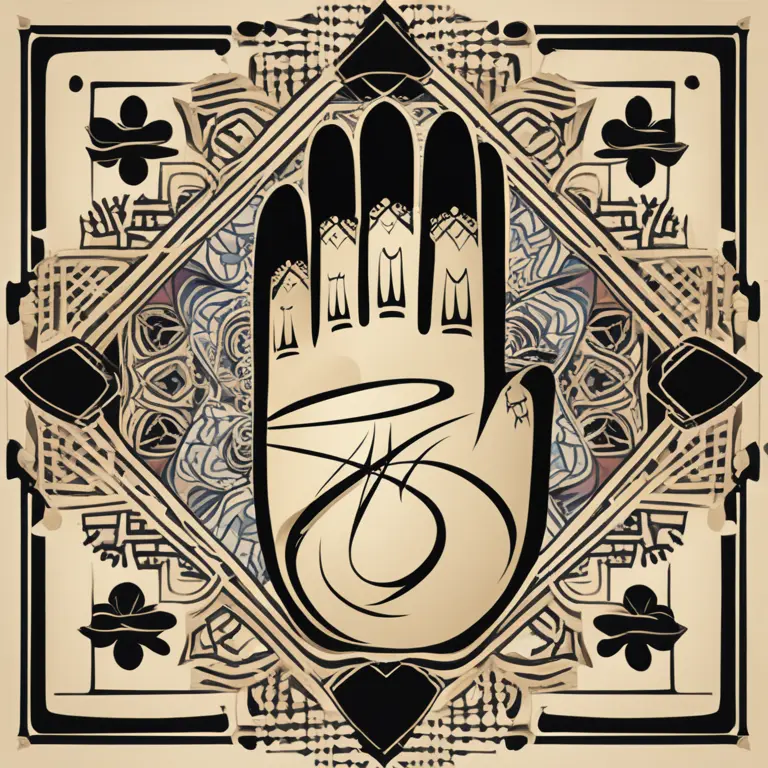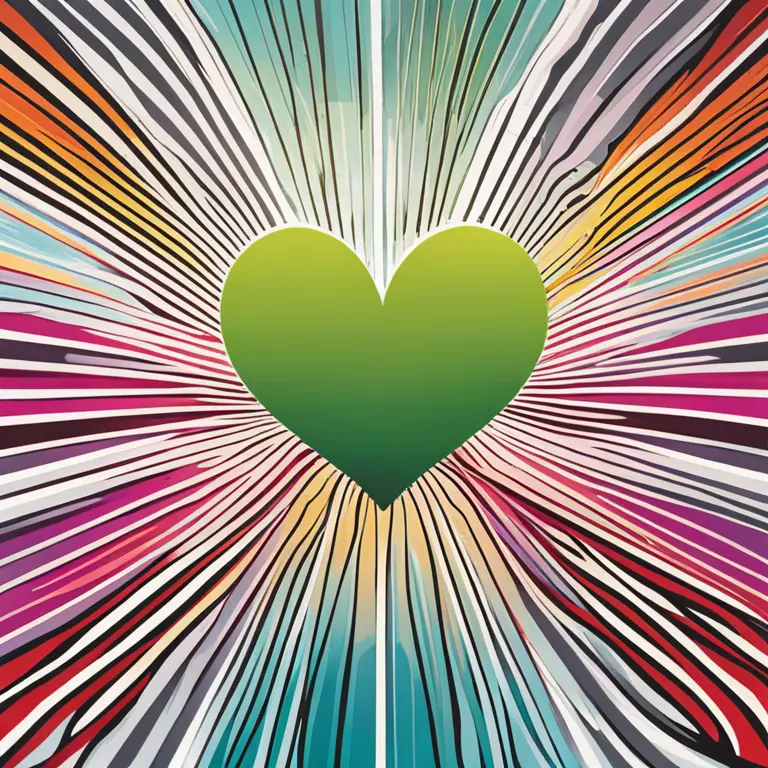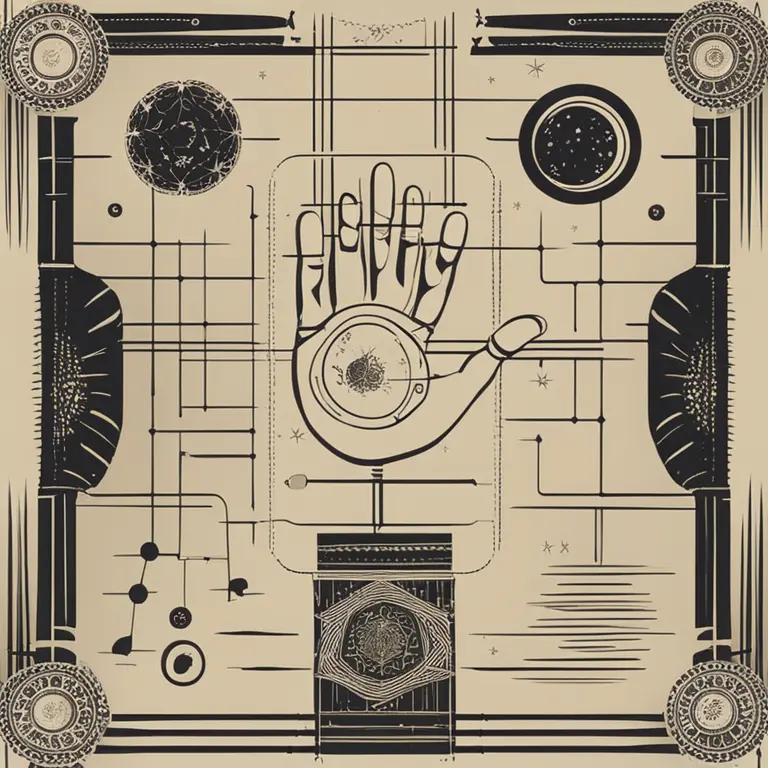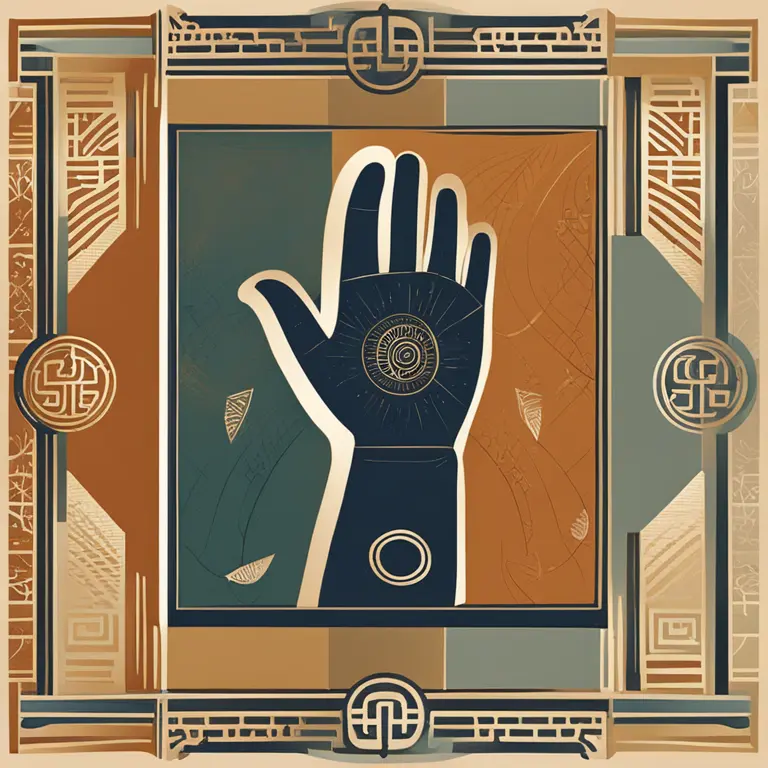
The Essentials of Palmistry: Hand Reading Guide
Delve into the basics of palmistry, the art of interpreting the lines and features of the hand, to gain insights into personality and life paths.
article by Nora Pennington
What is Palmistry?
Palmistry, also known as chiromancy, is an ancient practice that involves studying the palms to predict aspects of an individual's future and uncover their character traits. As a fusion of art and science, palmistry has its roots in various cultures, notably Indian, Chinese, and Greek civilizations. While traditionally considered part of the esoteric arts, modern palmistry often interfaces with psychological concepts to provide a more nuanced interpretation of hand features. The practice has evolved over time, adapting to contemporary understandings of human nature while retaining its mystical allure.

Historical Significance
The art of palmistry dates back thousands of years and has been referenced in several important cultural texts, including the 'Vedas' in India. Over the centuries, the practice spread throughout Eurasia and became a common tool for divination. In the modern era, palmistry has undergone a renaissance of sorts, with renewed interest in spirituality and alternative ways of self-exploration. While skeptics often dismiss palmistry as a pseudoscience, many find value in the introspection it encourages, as well as its rich historical context and cross-cultural presence.

Understanding Palm Lines
The lines on one's palm are believed to tell a story about their personality and potential life path. The most prominent lines in palmistry are the heart line, head line, life line, and fate line. Each holds a specific meaning related to emotions, intellect, life experience, and one's overall journey. Interpreters will look at the depth, length, and curvature of these lines, among other characteristics, to glean insights. Since palm lines can change over time, palmists often suggest that our destinies are not fixed, and that actions and mindsets can influence our life's trajectory.

Mounts and Fingers
Beyond the lines, palmists examine mounts and fingers for additional revelations. Each mount, named after celestial bodies like the Sun, Moon, and Venus, is said to correspond with different aspects of our persona, such as ambition, creativity, and love. The shape and size of the mounts can inform a reading by indicating the dominance of certain traits. Fingers and their associated elements like length, flexibility, and the shape of fingertips offer yet another layer to a comprehensive palm reading, reflecting an array of personal attributes from leadership qualities to communication styles.

Scientific Perspective and Ethics
While palmistry is not scientifically validated, it fascinates many who see it as a form of folk psychology. Critics argue it relies on the Forer effect, where vague and general statements are perceived as highly accurate. Yet, its contemporary practice emphasizes ethical considerations, including maintaining client confidentiality and delivering readings with sensitivity. Professional palmists are often well-versed in counseling techniques, which they use to ensure that regardless of the level of belief subscribed to by the client, the experience is affirming and constructive.
The Revival and Adaptation
In the digital age, palmistry continues to adapt. Online platforms have increased access to palm readings, and there's growing interest in how traditional practices intersect with technology. Apps and websites offer automated palm readings based on uploaded images—a testament to the perennial human interest in self-discovery through such esoteric traditions. Although it is still crucial to consult experienced practitioners for in-depth analyses, the convenience of modern iterations brings palmistry to a broader audience looking to explore the old-age practice.
Published: 1/11/2024
Modified: 1/12/2024
More predictions
Come back here soon to learn more about yourself and your future


Can We Trust Palmistry?
Delving into the realm of palmistry, this article examines its credibility and place in contemporary spiritual practices.


Can Palmistry Foresee One’s Demise?
Delve into the contentious debate about whether palmistry can predict the end of life and the ethical considerations of such a claim.


The Efficacy of Palmistry: Real Insight or Fancy?
Delve into the validity of palmistry as a form of divination. Is there a truth behind the lines on our palms, or is it just a charming fancy?